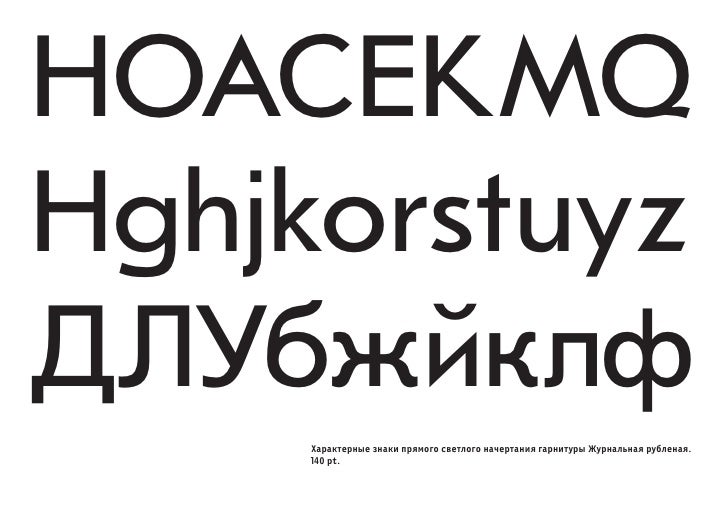Zhurnaljnaya Rublenaya Shrift
Cyrillic type design. Russian designer of Rublenaya Shadow (1957). (Lviv, Ukraine) created the broken bones font Krukevichu Shrift in 2015.
Everyday designs using Zhurnalnaya roublennaya Type production in the young Soviet Union In the communist period, Soviet consumer goods were limited both in number and in regards to aesthetic options to choose from. It was the same with typefaces for books, posters, newspapers, etc.
There were only few of them: the same recognizable characters appeared on greyish cinema tickets and from art books to magazines for children. The geometric sans serif typeface was Zhurnalnaya roublennaya, as grey and dull as everyday communist life itself.
Beside its own type foundries, Tsarist Russia had a few branch offices of European ones. Chief among them, H.

Berthold AG from Germany, acquired a smaller type foundry in St. Petersburg in 1900, and another one in Moscow in 1901. At that time Berthold was one of the biggest type foundries in the world, and so its typefaces quickly spread throughout Russia. After the communist revolution the Russian printing industry continued to use existing fonts, often from Western companies, but in the 1930s there was an evident need to create the Soviet empire’s own printing equipment and typefaces. This was especially the case as the Iron Curtain started to descend and the material heritage of the previous imperial time wore out.
Later Soviet Union specimens of Zhurnalnaya roublennaya with Latin and Cyrillic, designed by Anatoly Schukin Those sources also mention the German typeface as a prototype, created by Jakob Erbar for the Ludwig & Mayer foundry in 1922. It was very popular in Europe during the 1920s and 1930s. Its geometrically-shaped, rounded characters and sober look fit nicely into the period’s visual image.
If you don't use all your downloads, they simply roll over to the next month for as long as your pack is active or renewed. Ramka dlya sertifikata fotoshop download.
Nowadays, Erbar is only rarely being used. Perhaps the reason is Erbar’s absence in the Letraset library in the 1970s, or during the early digital era of the 1990s. Although the color of Erbar in body copy is similar to Roublennaya’s, the microshapes of the letters are not the same. Erbar is too fancy to be the sole father of Zhurnalnaya roublennaya. Specimens of Erbar-Grotesk, designed by Jakob Erbar The year 1947 was an exceptional time to release a typeface in Russia. The design process had started before WWII and was finished very shortly after — two years is not a long time after fighting a war of near-total destruction. But the Soviet Union was on the winner’s side and removed several of Germany’s metal and machine enterprises.
